CNC machining services forUSA
Get tailored, top-tier parts delivered fast
CY's CNC machining services, in USA , makes quality components for your needs.

DongGuan ChengYang is a leading provider of CNC machining services for Kentucky, offering high-quality precision machining solutions for a wide range of industries. With years of experience in the industry, our team of skilled machinists and technicians are dedicated to delivering top-notch results that meet the unique needs and specifications of our Kentucky clients.
Our state-of-the-art facility in DongGuan is equipped with the latest CNC technology and equipment, allowing us to provide fast, reliable, and cost-effective machining solutions for businesses in Kentucky. Whether you need prototype development, production machining, or custom parts manufacturing, we have the capabilities and expertise to handle projects of all sizes and complexities.
At DongGuan ChengYang, we pride ourselves on our commitment to customer satisfaction and quality craftsmanship. By choosing us as your CNC machining service provider for Kentucky, you can trust that your project will be completed with precision, efficiency, and attention to detail. Contact us today to learn more about our services and how we can help bring your project to life.
CNC Machining services
Dongguan C.Y. are equipped with 3-axis, 4-axis, and 5-axis CNC milling machines, helps us to proficiently processing part ranging from plain to elaborate .
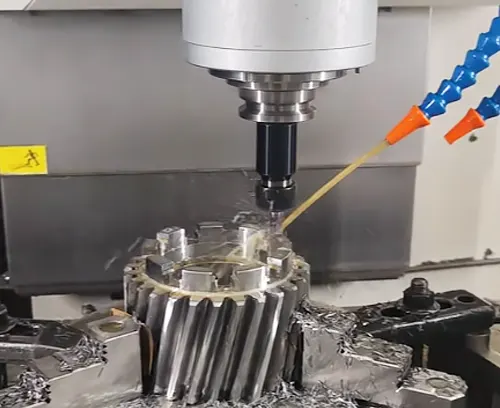
CNC Milling
Utilizing both CNC technologies for versatile production, meeting customer needs with efficient, high-quality part production.
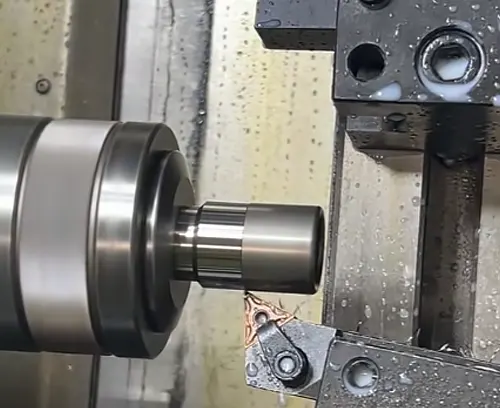
CNC Turnning
CY's CNC lathes, turning centers, and mill-turn equipment enable us withefficiency to produce a broad range of parts for every patron.
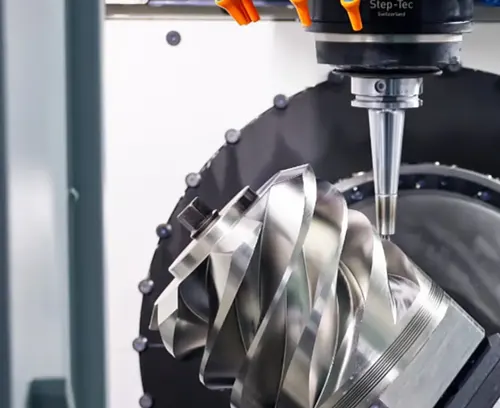
5 Axis CNC Milling
Equip with 5-axis machining solutions for sophisticated and tightly toleranced parts. Featuring speed processing, it's perfect for elaborate designs.

Precision Machining
Ensure precision-driven fabrication by combining several production phases to optimize output, reliability, and quicken production cycles, assuring efficient, top-level manufacturing performance.
Capabilities
Maximum Dimensions
2000mm x 1500mm x 800mm or 78.7 x 59 x 31.5 inches.
Maximum Dimensions
2000mm x 1500mm x 800mm or 78.7 x 59 x 31.5 inches.
Support Threading
Prefer Metric Threads, Also Support UNC and UNF threads.
Wall Thickness
Generally, a workable minimum wall thickness is 0.5mm for metals and 1.0mm for plastics.
Material Available
Metals: Aluminum, Copper, Brass, Bronze, Stainless Steel, Carbon Steel, Steel Alloy, Titanium, and plastic, etc .
Tolerances
Dimension: Depends on the size and material, generally +/- 0.01mm or 0.0004 inches
Common CNC DFM
With Design for Manufacturing, a product is designed from the start to be easier and cheaper to produce.

Sharp Corner

Undercut

Undercut

Thick Walls

Tolerance Guide

Small Hole

Narrow Area
Metal Materials
We offer instant quotes for over 100 metals and help compare processing material costs.We make it simple to quote 100+ metals and compare how processing costs stack up.
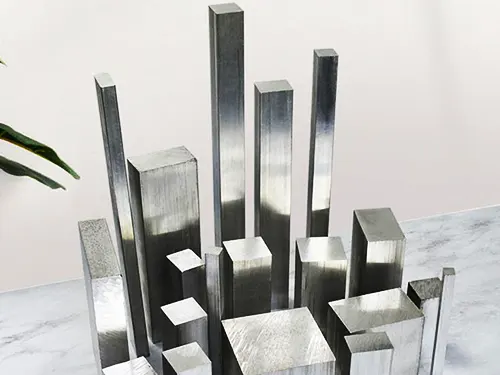
Aluminum
Aluminum is a widely used material in CNC machining due to its excellent machinability, light weight, and corrosion resistance. It is commonly used in various industries such as aerospace, automotive, and electronics. Some common types of aluminum materials used in CNC machining include 6061 and 7075 aluminum alloys, which are known for their strength and versatility. Another popular option is 2024 aluminum, which offers good fatigue resistance and high strength-to-weight ratio. Additionally, 5052 aluminum is valued for its formability and weldability. These materials are chosen for their specific properties and are suitable for a wide range of CNC machining applications.
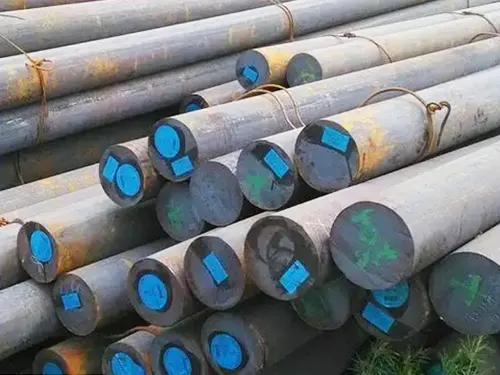
Carbon Steel
Carbon steel is a popular material used in CNC machining due to its durability and ability to withstand high temperatures. It is composed primarily of iron and carbon, with trace amounts of other elements. Some common types of carbon steel used for CNC machining include mild steel, medium carbon steel, high carbon steel, and ultra-high carbon steel. Mild steel is the most commonly used type, as it is versatile and easily machined. Medium carbon steel is stronger and more durable, making it ideal for applications requiring higher strength. High carbon steel has a higher carbon content, resulting in increased hardness and wear resistance. Ultra-high carbon steel is the strongest and hardest type, suitable for cutting tools and precision machinery components.
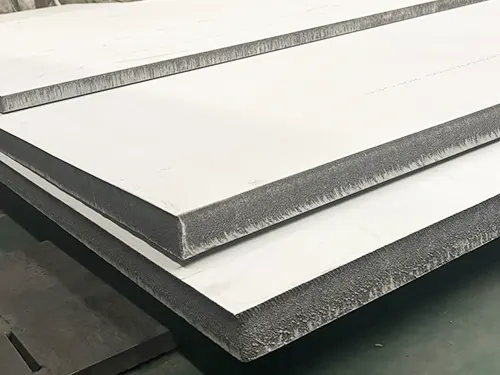
Stainless Steel
Stainless steel is a popular material used for CNC machining due to its durability, resistance to corrosion, and overall strength. It is a versatile material that can be easily formed into complex shapes and designs with high precision using CNC machines. Some common types of stainless steel materials used for CNC machining include 304 stainless steel, which is known for its excellent corrosion resistance and high-temperature strength. 316 stainless steel is another common type, featuring added molybdenum for enhanced resistance to corrosion in harsh environments. 17-4 stainless steel is often used for its combination of high strength and excellent machinability, making it a popular choice for a wide range of CNC machining applications.
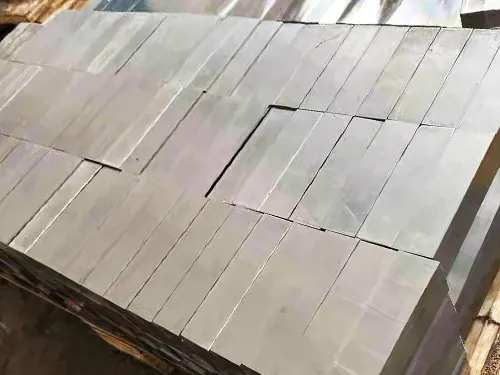
Tool Steel
Tool steel is a type of carbon and alloy steel that is specifically designed for use in the production of tools and tooling components for CNC machining. Tool steel is chosen for its excellent hardness, wear resistance, and toughness properties, making it ideal for applications where high levels of stress and wear are present. Some common types of tool steel used in CNC machining include D2 steel, A2 steel, O1 steel, and M2 steel. D2 steel is known for its high wear resistance and hardness, making it great for cutting tools and punches. A2 steel is a versatile tool steel with good toughness and wear resistance. O1 steel is popular for its ease of machining and good wear resistance. M2 steel is a high-speed steel with excellent heat resistance and hardness for cutting tools and drills.
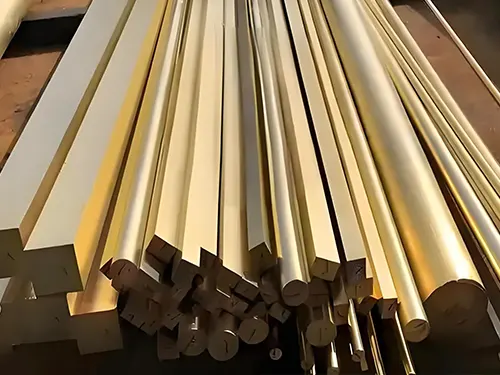
Brass
Brass is a commonly used material in CNC machining due to its excellent machinability, corrosion resistance, and attractive appearance. It is a metal alloy primarily made of copper and zinc, with small amounts of other elements such as lead, tin, or aluminum added to improve specific properties. Common types of brass materials used in CNC machining include C360, C464, and C260. C360 brass, also known as free machining brass, is ideal for machining due to its high lead content. C464 brass, or Naval brass, is highly resistant to corrosion in seawater and is commonly used in marine applications. C260 brass, also known as cartridge brass, offers good formability and is often used in electrical components. These different types of brass provide versatility in CNC machining for a wide range of applications.
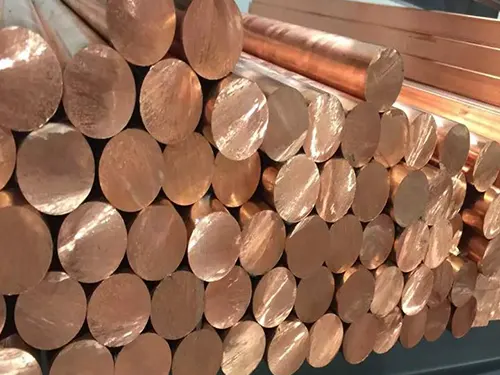
Copper
In CNC machining, a cooper is a tool used for creating precision holes in workpieces. It is designed with flutes that efficiently remove chips from the hole as it is being drilled. Common materials used for making coopers include high-speed steel (HSS), cobalt, and carbide. HSS coopers are suitable for drilling softer materials such as aluminum and brass. Cobalt coopers are known for their high heat resistance, making them suitable for drilling tough materials like stainless steel. Carbide coopers, on the other hand, are incredibly hard and can withstand high cutting speeds, making them ideal for drilling abrasive materials like titanium and composite materials. Each type of cooper has its own advantages and is chosen based on the specific material being machined.

Titanium
Titanium is a popular material for CNC machining due to its excellent strength-to-weight ratio, corrosion resistance, and biocompatibility. It is widely used in aerospace, medical, automotive, and other industries for producing high-quality, durable parts. Common types of titanium materials used in CNC machining include Grade 1 commercially pure titanium, Grade 5 titanium alloy (Ti6Al4V), Grade 2 titanium, and Grade 7 titanium alloy. These materials offer different properties and are chosen based on specific requirements for strength, ductility, and heat resistance. CNC machining with titanium requires specialized equipment and expertise to ensure precise and efficient production of complex components.
Plastic Materials
We offer instant quotes for over 200 plastics and help compare processing material costs.
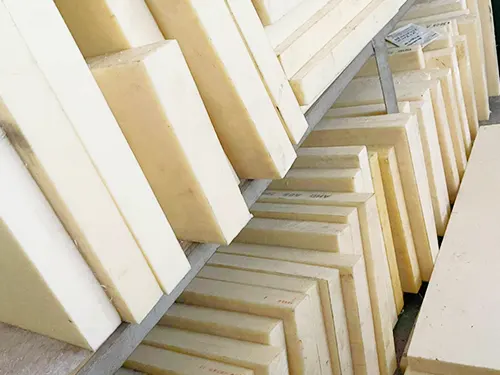
ABS
ABS (Acrylonitrile Butadiene Styrene) is a common material used in CNC machining due to its high strength, durability, and heat-resistant properties. It is a popular choice for producing prototypes, functional parts, and end-use products in various industries. One advantage of ABS for CNC machining is its ease of machinability, as it can be milled, drilled, turned, and tapped with relative ease. Additionally, ABS has good impact resistance and a smooth surface finish, making it ideal for aesthetic prototypes. However, one disadvantage of using ABS is its tendency to warp or shrink during the machining process, leading to dimensional inaccuracies. It is also susceptible to wear and tear over time, which may require frequent maintenance and replacement of parts.
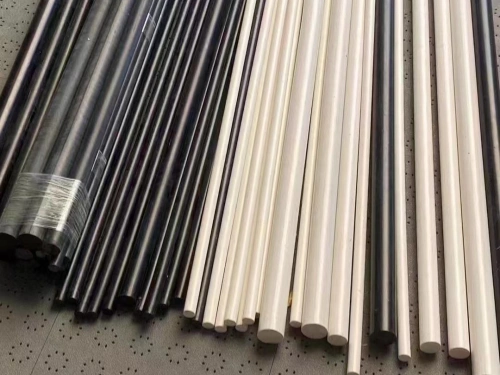
PMMA
PMMA, also known as Polymethyl methacrylate, is a versatile and commonly used material in CNC machining. It is a transparent thermoplastic with excellent UV resistance and weathering properties, making it ideal for outdoor applications. PMMA is easily machinable and can achieve very high-quality surface finishes. Its advantages include its transparency, impact resistance, and ease of fabrication. However, PMMA is more brittle compared to other plastics, making it prone to cracking under certain conditions. It also has a lower heat resistance than some other materials, which can limit its use in high-temperature environments. Despite its drawbacks, PMMA remains a popular choice for CNC machining due to its optical clarity and aesthetic appeal.
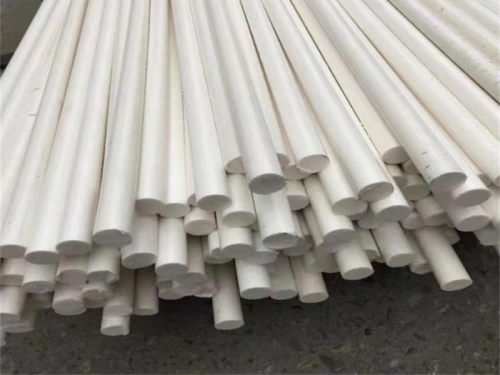
PE
PE for CNC machining stands for “Programmable Electronics”, the software used for writing and storing programs that control the movements of the machine. The advantage of using PE is that it allows for precise and complex machining operations, resulting in high-quality finished products with tight tolerances. Additionally, PE can automate the manufacturing process, increasing efficiency and reducing the chance of human error. However, the disadvantage is that PE requires a learning curve and advanced technical skills to operate effectively. Users must be well-versed in programming languages and have a deep understanding of the CNC machine’s capabilities in order to utilize PE to its full potential. Despite this drawback, the benefits of using PE for CNC machining outweigh the challenges, making it an essential tool for modern manufacturing processes.
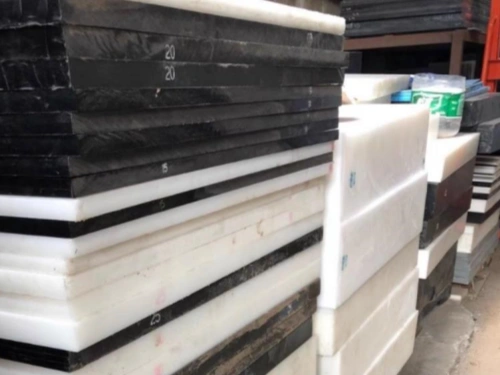
Nylon
Nylon is a popular material used in CNC machining due to its versatility and durability. It is a synthetic polymer known for its high strength-to-weight ratio, excellent wear resistance, and low coefficient of friction. Nylon is commonly used in various industries for creating prototypes, tooling, and end-use parts. One advantage of using nylon for CNC machining is its ability to produce detailed and precise parts with intricate designs. Additionally, nylon parts are lightweight, corrosion-resistant, and have a smooth surface finish. However, one disadvantage of nylon is its tendency to absorb moisture, which can affect its dimensional stability and make it unsuitable for certain applications. Overall, nylon remains a preferred material for CNC machining due to its outstanding mechanical properties and ease of machining.
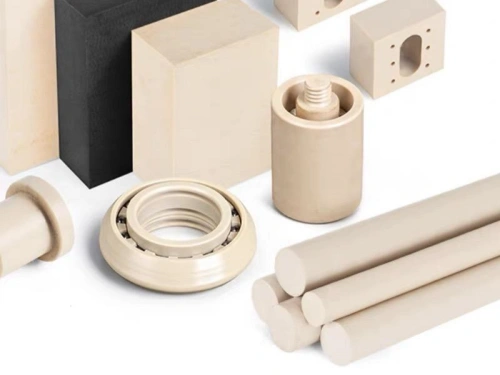
PEEK
PEEK, or polyetheretherketone, is a high-performance thermoplastic material commonly used in CNC machining due to its excellent mechanical and thermal properties. One of the main advantages of PEEK is its high strength and stiffness, making it suitable for applications requiring durability and resistance to chemicals and extreme temperatures. Additionally, PEEK is lightweight, biocompatible, and has good electrical insulating properties. However, one of the disadvantages of PEEK is its high cost compared to other thermoplastics, which may limit its use in certain budget-sensitive applications. PEEK also has poor wear resistance when compared to metals, making it unsuitable for high-friction environments without additional modifications. Despite its drawbacks, PEEK remains a popular choice for CNC machining in industries where high performance and reliability are essential.
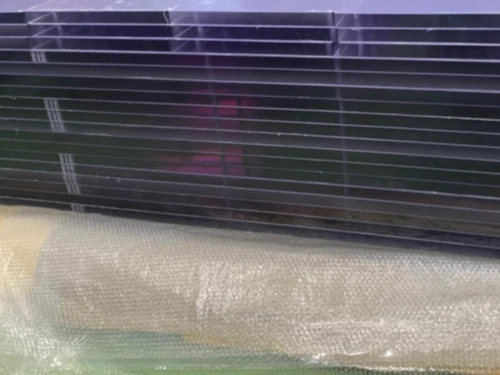
PC
A PC for CNC machining refers to a personal computer that is specifically used to control the operations of a CNC (Computer Numerical Control) machine. The primary advantage of using a PC for CNC machining is the ability to quickly and easily set up and modify machining programs, as well as communicate with the CNC machine in real-time. This can lead to increased productivity and efficiency in the machining process. However, a disadvantage of using a PC for CNC machining is the potential for system crashes or software malfunctions, which can halt production and lead to downtime. Additionally, PCs may require regular updates and maintenance to ensure optimal performance, which can add to the overall cost of operation.
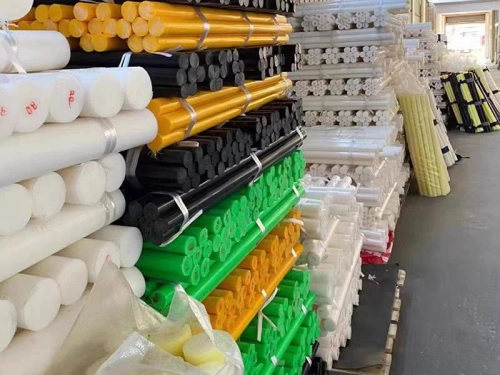
PP
PP, or Polypropylene, is a commonly used material in CNC machining due to its high strength-to-weight ratio, excellent chemical resistance, and low cost. One of the main advantages of using PP for CNC machining is its flexibility, which allows for intricate designs and complex shapes to be easily achieved. Additionally, PP is known for its durability and ability to withstand harsh environmental conditions, making it a popular choice for industrial applications. However, one disadvantage of PP is that it can be prone to warping during the machining process, which can result in inaccuracies in the final product. Despite this drawback, the overall benefits of using PP for CNC machining make it a valuable material for various manufacturing needs.
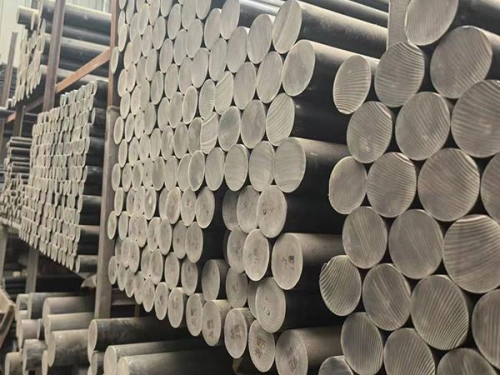
PET
PET, or Polyethylene Terephthalate, is a common thermoplastic polymer used in CNC machining for its versatile properties. PET offers great resistance to heat and chemicals, making it suitable for a wide range of applications. Its low moisture absorption and high strength-to-weight ratio make it a popular choice for manufacturing various components and products. One of the main advantages of using PET in CNC machining is its excellent dimensional stability, ensuring precise and accurate results. However, PET can be prone to warping and shrinking during the machining process, which can lead to inaccuracies and potential wastage of material. It is important to carefully monitor and control the machining parameters to overcome these disadvantages and ensure optimal results when working with PET in CNC machining.
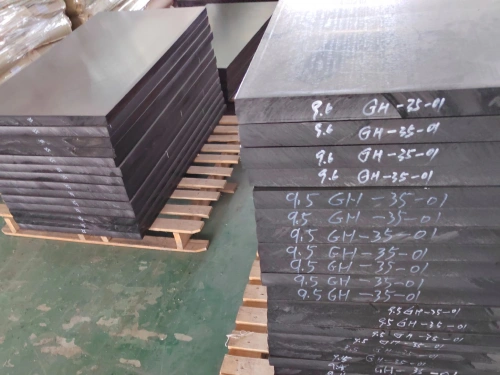
POM
POM, or Program Optimization Module, is a crucial tool in CNC machining that helps streamline and enhance the programming process. The main advantage of POM is its ability to analyze and optimize toolpath algorithms, resulting in faster machining times and reduced tool wear. Additionally, POM can identify potential collisions or bottlenecks in the program, allowing for adjustments to be made before any machining errors occur. However, a disadvantage of POM is the potential for increased complexity in the programming process, as operators may need additional training to fully utilize the software. Despite this drawback, the benefits of using POM in CNC machining ultimately outweigh the challenges, as it leads to improved efficiency and precision in production processes.
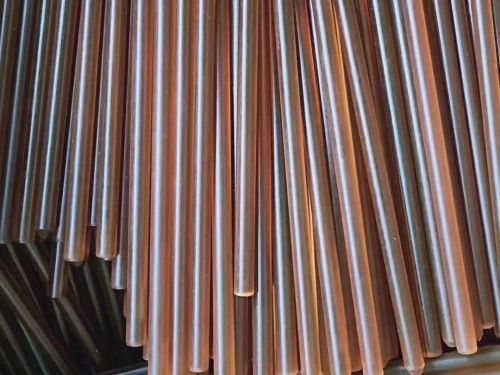
PVC
PVC, or polyvinyl chloride, is a common material used in CNC machining due to its versatility and affordability. Its advantages include high strength, durability, and resistance to chemicals and weathering, making it ideal for a wide range of applications. PVC is also easy to machine, allowing for intricate designs and precise cuts. However, one of the main disadvantages of PVC for CNC machining is its tendency to release toxic fumes when heated, which can pose health risks to operators. Additionally, PVC has a lower heat resistance compared to other materials like metal, limiting its use in high-temperature applications. Despite these drawbacks, PVC remains a popular choice in CNC machining for its cost-effectiveness and versatility.
Surface Finishes
Our experienced technicians are specialists in advanced surface treatment methods.
| Name | Description | Materials | Color | Texture | More |
|---|---|---|---|---|---|
| Brushing | Brushing is the act of using a toothbrush and toothpaste to clean the teeth and gums. It helps remove food particles, plaque, and bacteria, which can lead to cavities and gum disease. It is recommended to brush twice a day for optimal oral health. |
Aluminum, Brass, Stainless Steel, Steel, ABS,etc | N/A | Satin | |
| Sand Blast | Sand blast is a powerful method used for cleaning surfaces by propelling sand particles at high speeds. It is commonly used for removing paint, rust, dirt, and other imperfections from various materials. |
All Metal Materials, Plastic | N/A | Matte | |
| Tumbling | Tumbling is a form of gymnastics that involves various acrobatic skills such as flips, twists, and handsprings. It requires strength, flexibility, and coordination to perform these movements with control and precision. |
All Materials | N/A | Smooth, Matte | |
| Polishing | Polishing is the process of smoothing or shining a surface using friction or various tools. It involves removing imperfections and making the surface appear glossy and refined. Polishing can be done on various materials such as metal, wood, glass, and even leather. |
All Materials | N/A | Smooth | |
| Anodizing | Anodizing is an electrochemical process that enhances the corrosion resistance and durability of metals such as aluminum. It creates a protective oxide layer on the surface, providing a hard, long-lasting finish. |
Aluminum, Titanium | Clear, Yellow, Green, Blue, Black, etc |
Smooth, matte finish. | |
| Painting | Painting is a form of visual art where colors and pigments are applied to a surface to create a representation of an object, scene, or emotion. It is a way for artists to express themselves creatively. |
All Materials | Clear, Yellow, Green, Blue, Black, Multiple | Gloss, semi-gloss, flat, metallic, textured | |
| Black Oxide | Black oxide is a conversion coating used to blacken steel or iron parts. It provides corrosion resistance and enhances the appearance of metal products. The process involves a chemical reaction that creates a durable black finish. |
Steel, Stainless Steel | Black | Smooth, matte | |
| Electroplating | Electroplating is a process in which a metal coating is applied to a surface through the use of electrical current. This technique is commonly used to enhance the appearance, corrosion resistance, and durability of various objects. |
Aluminum, Steel, Stainless Steel | Gold, Silver, Nickel, Copper, Brass, Zinc, Chrome | Smooth, glossy finish | |
| Powder Coating | Powder coating is a dry finishing process that involves applying finely ground particles of pigment and resin onto a surface. The coating is then cured under heat, creating a durable and attractive finish. It is commonly used in industries such as automotive, appliances, and furniture for its resistance to corrosion, chemicals, and UV rays. |
Aluminum, Stainless Steel, Steel,etc | Custom | Gloss, matte or semi-gloss | |
| Alodine | Alodine is a chemical conversion coating that is used in the aerospace and military industries to protect aluminum and other metals from corrosion. It provides a corrosion-resistant surface and improves paint adhesion. |
Aluminum, Stainess Steel | Clear, Gold | As machined | |
| Passivation | Passivation is a process that helps protect metal surfaces from corrosion. It involves creating a protective oxide layer that prevents rust and other damaging substances from affecting the material. This technique is commonly used in industries such as aerospace and chemical processing. |
Stainess Steel | N/A | Matte | |
| Electroless Plating | Electroless plating is a process used to deposit a metal or alloy onto a surface without the need for an external power source. It relies on chemical reactions to achieve uniform coating thickness. |
Metal, Plastic | Gold, Silver, Nickel, Copper, Brass, Zinc, Chrome | Smooth, glossy finish |
Gallery Parts
CNC machining services Locations Near Kentucky, USA
We have experts with years of experience in delivering top-tier product surface treatments.
FAQ
Here, some of the most common questions about CNC machining services for Kentucky, USA. ” free to contact us if you have any question.”
Introduction
CNC machining services play a crucial role in the manufacturing industry, providing precise and efficient solutions for a wide range of industries. If you are based in Kentucky, USA, and considering utilizing CNC machining services for your business needs, you may have some questions about the process. Here are 10 pairs of frequently asked questions and their answers to help guide you through the decision-making process.
Q: What industries can benefit from CNC machining services?
A: Various industries can benefit from CNC machining services, including aerospace, automotive, electronics, medical, and defense sectors.
Q: What materials can be used in CNC machining?
A: CNC machining can work with a wide range of materials, such as aluminum, steel, titanium, plastics, and more.
Q: What are the advantages of CNC machining services?
A: Some advantages of CNC machining services include high precision, consistency, efficiency, and the ability to produce complex parts.
Q: How can I choose the right CNC machining service provider?
A: When selecting a CNC machining service provider, consider factors such as experience, capabilities, reputation, and customer reviews.
Q: What is the typical turnaround time for CNC machining services?
A: The turnaround time for CNC machining services can vary depending on the complexity of the project, but many providers offer quick turnaround times to meet customer needs.
Q: What is the cost of CNC machining services?
A: The cost of CNC machining services can vary based on factors such as material, complexity, quantity, and turnaround time. It is best to request a quote from the service provider.
Q: Is CNC machining suitable for prototyping?
A: Yes, CNC machining is an excellent option for prototyping due to its accuracy, speed, and ability to produce high-quality prototypes.
Q: Can CNC machining services accommodate custom designs?
A: Yes, CNC machining services can accommodate custom designs, allowing for the production of unique and intricate parts according to specific requirements.
Q: What quality control measures are in place for CNC machining services?
A: Reputable CNC machining service providers implement strict quality control measures, such as inspections, testing, and certifications, to ensure the highest quality standards are met.
Q: How can I request a quote for CNC machining services?
A: To request a quote for CNC machining services, simply contact the service provider with details of your project, including material, quantity, design specifications, and any other relevant information.
Conclusion
By understanding these frequently asked questions about CNC machining services, you can make informed decisions when selecting a provider for your manufacturing needs in Kentucky, USA. Whether you are looking to produce prototypes, custom parts, or large-scale production runs, CNC machining offers a reliable and efficient solution for your business.
